We are producing 300 million tons of plastic each year and only a small percentage is recycled. Nowadays, plastic litter can be found in all ecosystems. It’s in the soil and it’s in the oceans. Microplastics have been discovered even in the Arctic ice. It’s an issue that is impacting the lives of thousands of species, harming or killing them. We all the power to reduce the plastic pollution problem by being eco-friendly. Even when we travel. Because we are not citizens of a certain country. We are citizens of the world and we must take care of it. Each and every one of us. Together.
More than 8 million tons of plastic find their way into our oceans each year and this is affecting all kinds of life forms, from the giant whales to the smallest living creatures, like plankton. If we don’t act fast, this piece of dark humor will become our dark future:
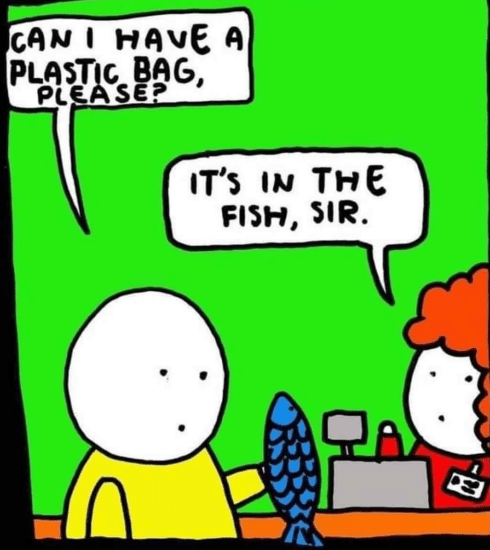
I’m sure you have already seen tons of articles and campaigns against the use of plastic. I’m not going to mention again all the everyday objects that you can replace to become eco-friendly. Instead, I’ll focus on those that impact your life as a traveler. Even better, I tried to make a list of things you can do with a minimum of effort. I’m mentioning the effort because there are two types of good people in this world. The first type is the hardcore ecologist. This guy books a hotel only after he emailed them, asking what’s their recycle policy. He spends hours on end trying to find restaurants that don’t use plastic for takeaway food. And so on. You get the point. This guy has a mission and he goes all the way with it. Nothing wrong with this approach, but we can’t expect everyone to do the same. I’ve heard some people respond with: “Ain’t nobody got time for that” when they heard about the high-flown process of being plastic free. These people fall in the second category. The “I want to help, but please make it simple” kind of people. You probably don’t want to admit it, but chances are you’re one of them. Hell, even I am one of them. So the following ideas are for you and for me. For all our well-intentioned, but lazy asses. If you’re ready to make a change, let’s dive right in!
1. Choose your toiletries wisely
First of all, don’t count on your hotel’s toiletries. They most likely consist of single-use plastic bottles of shampoo/shower gel and plastic toothbrush wrapped in… more plastic. Bring your own. But don’t buy mini-sized bottles every time you travel. You can either go for hygiene products in solid form or you can buy travel kits that have mini-containers for your favorite liquid/gel/cream products. Because you refill them from bulk quantities, this second alternative is also cheaper. Yes, those travel kits are usually made of plastic too, but you can use them for many, many years and at the end of their life cycle, just make sure you recycle them. As for the toothbrush, just switch to one made of bamboo. If you want to take things even further, buy a wooden hairbrush or a bone comb. They are a better choice for the health of your hair, too.
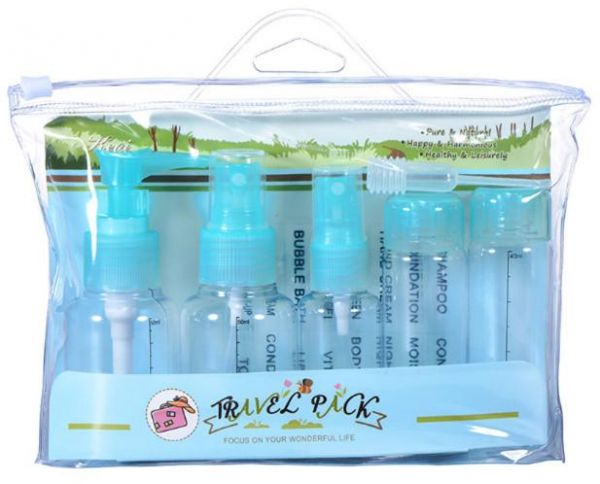
2. Find alternatives to plastic souvenirs
This one really isn’t hard. There are many souvenirs made of plastic or with plastic wrapping out there, but the alternatives are even more numerous. You can easily opt out for fridge magnets, cardboard or textile bookmarks, wood or ceramic masks, and so on.
Speaking of souvenirs, I can’t help to not raise awareness of something that came to my attention recently. Apparently, in some regions of China, you can buy live animal souvenirs. The poor creatures (lizards, turtles, fish) are sealed in plastic bags filled with an oxygenated and nutritious fluid that keeps them alive for a maximum of two or three months. This is wrong on so many levels. If you happen to see something like this anywhere in the world (there is a chance that similar cases exist in other places too), please don’t support the vendors in ANY way. If there is no demand, there is no supply and hopefully, these kinds of barbaric acts will cease as soon as possible.

3. Choose food that is healthier for both you and the planet
Some of you might like to cook their own food even when you’re traveling. Some might do so because they’re on a budget and can’t afford to eat out every single day. Some don’t even want to hear about cooking on their vacation days, but
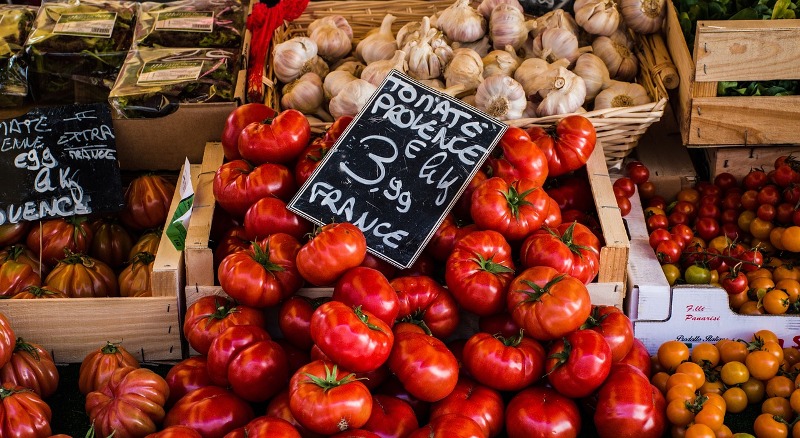
Of course, you’ll notice a lot less or no plastic at all for the packaging. Moreover, visiting food markets are a great way to get a real feel of the local culture and interact directly with the people living there. Also, try to
4. Be one of the cool kids with a reusable cup or bottle
When you travel, you’re out all day exploring. You walk a lot, you take bike rides, go on tours and explore museums. When the thirst kicks in or the desire for a sip of coffee, you can be tempted to go to the closest store and buy a bottle of water, which will generate unnecessary plastic waste. You can address the issue with a reusable cup or bottle. You don’t need both. Make a choice and stick with it. Personally, I prefer to carry around only a reusable bamboo cup. And yeah, I know that cup is intended for coffee, but who are you to judge if I choose to pour in any liquid my heart desires? Water, milk, soda, orange juice, you name it, every single one of these has been in my bamboo cup at least once. Of course, depending on your preference, you can opt for reusable bottles too. Oh, and did I mention that you can find such recipients with different colorful and adorable designs?
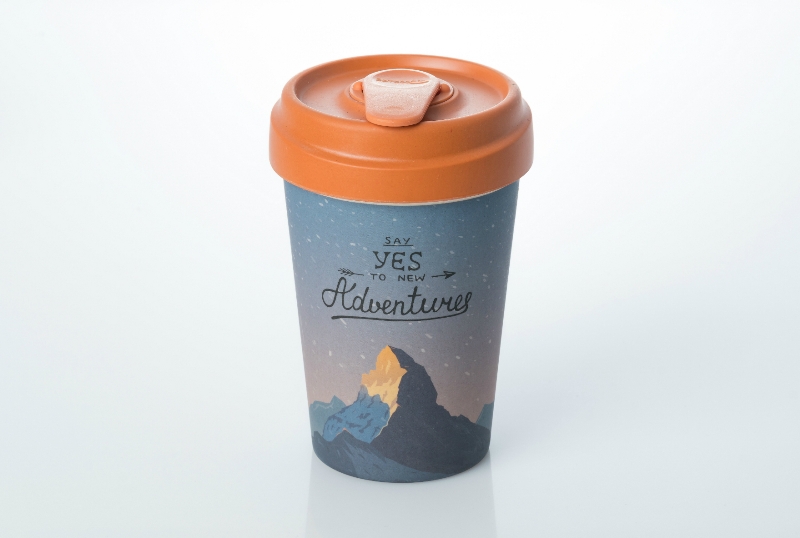
Also, I don’t think it’s just me when I say that the people carrying them look cool. I don’t know why. Maybe it’s the power of being an awesome, responsible person wink wink.
5. Accede to the No Straw Movement
Straws are the Internet’s latest obsession. Everyone is talking about them, making challenges against them, blaming them for all the evil in the world. And you probably don’t understand what justifies this hype, just like I didn’t understand in the beginning. Let me explain. Sure, a straw is made of a small amount of plastic, but they are meant for single use, so the amount of straws that are thrown away daily is tremendous. Because of their small size, straws were ignored and overlooked for so long. Of course, straws are not bio-degradable, but after they are thrown away they can break in little pieces that can be easily swallowed by animals. Being a part of the No Straw Movement doesn’t necessarily mean you need to give up straws forever. There are reusable options on the market, made of materials like bamboo, metal or glass. What would it be for you?
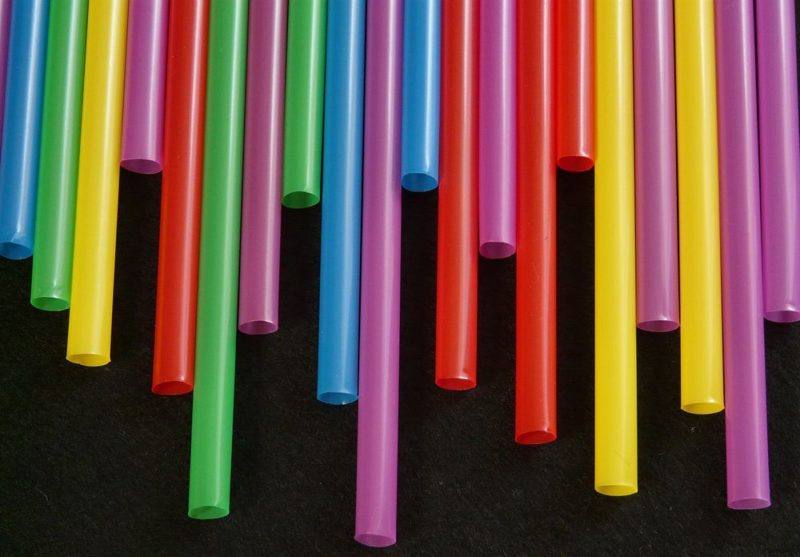
6. Collecting trash could be your cup of tea (or coffee)
Over the past two years, I’ve seen some businesses, mainly located in beach areas, that give free products, like coffee, for anyone who fills up a small bucket of trash and brings it to them to recycle. Aside from being a great way of promotion, this also makes a positive impact on the environment. I know what you’re going to say: “Oh, Elena, you promised to deliver lazy ways to be eco-friendly. Now you’re forcing us… to do actual stuff”. Ok, let’s be honest, it’s just a small bucket. You can fill one in less than 5 minutes, while you take a walk on the beach. Not so bad. And you get something in return, so I’d say it’s a pretty good deal.

7. Ditch the floaties
Let’s be real. Instagram has ruined us. We’ve all seen those sun-kissed Insta models in infinity pools, sipping cocktails on pink flamingo floaties and suddenly everyone wants to copy the trend. But what if I told you that almost all flotation devices are made of PVC, the material that is most guilty for the plastic pollution? Nothing glam about that. The worst part is that floaties have almost NO eco-friendly alternatives. Or at least I couldn’t find any. raising eyebrow Manufacturers in the pool and beach products industry, I’m looking at you! Don’t you think it’s time to change things a bit?
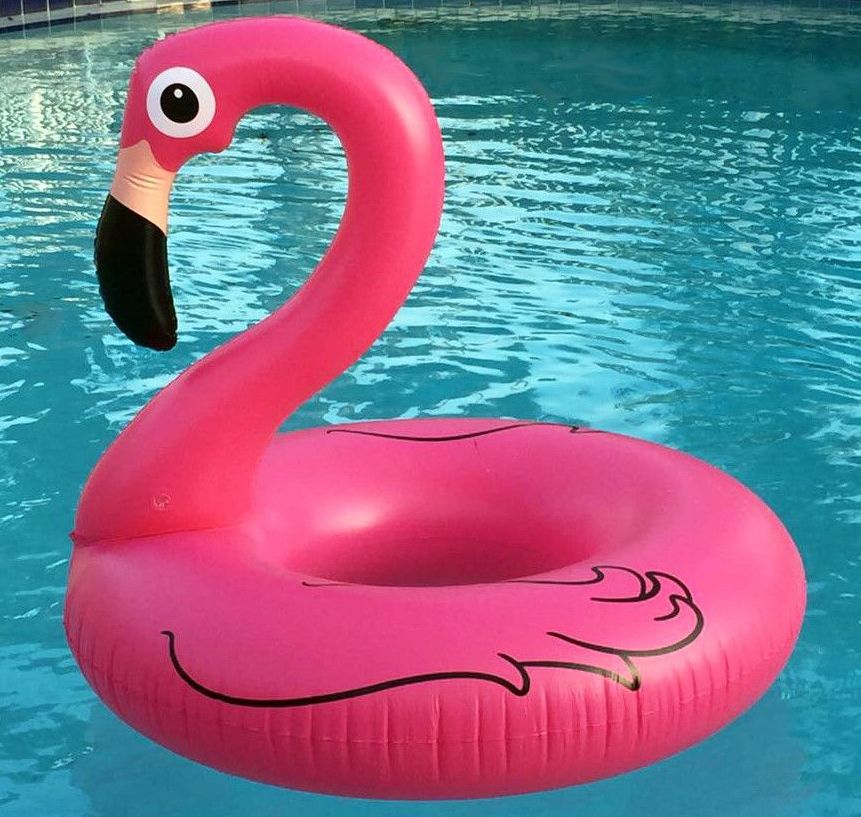
By the way, if you have ideas for alternative flotation devices, please share. I’m sure for many it would be a life saver. Pun intended.
8. Glitter isn’t as fabulous as you might think
Glitter is another trend of the moment. We see glittery clothes and glittery makeup on Instagram a lot, especially on those who go at music festivals. (Flip) sequins sewn on backpacks, cosmetic bags, pillowcases, shoe wear and clothes are also extremely popular. It’s obvious we like shiny things. We are like the Blue Jays of the 21st century. But what you should know is that glitter and sequins are both micro plastics and are very, very dangerous for the environment, because they are made of teeny-tiny pieces of non-biodegradable plastic. These pieces easily get into the soil and the oceans and are often ingested by animals, harming them. The best way to help in this case is to just stop buying products that use them. Go for a neon eye shadow or a pink dress instead and you’ll catch the eye just as much.

9. Bio-plastics are the new trend
I first heard about bio-plastics a few years back. It was when a well-known brand of bottled water from my country started to advertise their product as eco-friendly, for having their bottle, which seemed to be plastic, actually being made of… plants. Then starch became common for making bio-plastic, but the substance was extracted from potatoes. Later, I found out about the 16 year old Turkish girl that had the idea for a better source of starch: banana peels. Why better? Because it uses organic waste material. I became more and more hooked on finding plastic alternatives. For more insight, I started to go to conferences, fairs and events that covered the subject. First to Brain Bar in Budapest, then to Pack Expo in Bucharest and some other smaller ones in between. Recently, another great idea came to my attention:
What I’m trying to say is that more and more alternatives to plastic are discovered as time goes by. Follow the news to keep you up to date with the latest discoveries. That way you will know what choices you have and you can educate others, too.
I’m looking to expand this article and add more ideas, but I need your help. Do you know any other easy ways to deal this the plastic pollution problem? If so, don’t keep it to yourself, share your thoughts down below. Also, if you found the article helpful, don’t forget to share it with your friends. Spread the word to make the world a better place!

These are some pretty useful advices. Maybe I will start use some of them actually. :)
What a great post. Awesome ideas, and a lot of good info to fill in the gaps; you’re right that things like the straw craze sort of feel like they came out of nowhere! Also, that is absolutely horrifying about the animals in plastic bags. I’ve been to China but never seen that, but you’re absolutely right that vendors shouldn’t be supported in any way if they’re selling those…dang.
This blog is the need of the hour
I’m still reeling from the poor animals locked in sealed plastic for months. Those vendors should be arrested and punished. Ugh…
Yes! Sing it!! Very appropriate especially since Earth Day is round the corner
These are awesome tips. And here’s the thing – I don’t understand why there are many people nowadays that can’t drink without the straw.
The live turtle souvenirs make me so sad and angry. I can’t believe that’s a trend. Not only is that not environmentally friendly, but it’s just inhumane. All of your suggestions are great. I never go on a trip without my reusable water bottle or coffee cup!
When it comes to souvenirs, I’ve always brought jewellery, fridge magnets or key rings and they’re stored in wooden boxes or paper bags. My travel kits has contained the same items (other than the toothbrush) for 8 years as its all refillable or reusable. I only use plastic when it’s a must and when it’s reusable, especially when abroad.
So important to be more environmentally conscious and to reduce plastic waste whenever possible
These are some fabulous tips to keeping this world clean!! The saddest this is to see a beach destroyed only because there was plastic waste.
What a great article! I absolutely agree with you and mentioned most of these points throughout my articles but never devoted a complete article to this topic. Thank you for sharing, I really enjoyed your article
Great ways to save pollution whilst traveling! I don’t travel but I do try to save pollution by using recyclable bags when shopping.
Love this post. Helping to save our environment is always the best thing yo do.
Thanks for writing a blog post about such an important topic. Every day at my work place, I try to make sure people properly follow recycling and throw waste in proper trash bags. If everybody does their bit, we CAN save our environment. – http://itsasweetsweetworld.com
These are great ideas on how to reduce the plastic pollution. Now at grocery stores in my hometown, you have to pay for plastic bags as a way to encourage those to use reusable bags.
Thanks for sharing all the tips to save plastic and reduce it while travelling i always encourage no plastic while travelling
I loved reading this! Thank you for trying to save the environment! I’m joking the no straws movement! I also try not to use plastic when I don’t have to! Recycle recycle recycle!
Well done in collaborating this info. This year I have decided to use less plastic and this article came on time!
I love this post. Even if you typically recycle it can be easier to not be conscious of how much you waste when traveling.
LOVE, LOVE, LOVE this!!! Little efforts make such a big difference!!
Whenever I hike, I make sure to bring an extra trash back. I use it to collect human rubbish left on the mountain. :)
To add to your post, here in India use of plastics bags is a huge risk to our environment and we are constantly trying to use jute bags in place of plastics polythenes. Some markets have gone to the extent of old days to wraps small items in leaves instead of using plastics.
This is great, I’m working on implementing many of these myself. I fly a lot so I purchased a collapsible water bottle to bring with me on my flights. I used to purchase a bottle of water before every flight, so now I just refill the one I have. It’s so much cheaper too.
We need to start taking care of the environment, sure nature can repair herself but that is only if it has time, and judging by everything that is the only thing nature doesn’t have now.
The biggest thing on my mind is to find an alternative to distilled water plastic bottles. Though we can carry a water bottle, we would need to finding ways of refilling it without buying distilled water. Any ideas?
I like the beach litter idea. The first picture is so meaningful, “It’s in the fish”. Nice steps to reduce plastic pollution. I will keep it in mind.
Agreed! I would love to see more businesses take that example to help clean the environment.
These are some great tips.. Bio plastic seems interesting I would try to find more about it 👍🏻
I really think bio plastics are the future. There are a lot of great information resources out there, so make sure to check them out!
This is a great post! I loved reading about how to minimize plastic waste. I think that is a huge fault of our own for letting the waste get so bad. I appreciate this post so much and I am sharing!!
Thank you so much! Spreading the word really helps raise awareness! :)
Such great sustainability tips especially with Earth Day on the horizon! So important to treat our beautiful planet with care.
This is our home, so I’d say it is the most important thing :)
I love everything about this! I just did a bunch of research on an upcoming blogpost I have and it’s crazy how much waste we are putting out there that can be recycled and repurposed. Wonderful for giving some great examples to make it simple. Every little bit we can do is a huge help. 💕💕
I’m lazy as well, so I wrote this article as if it was written for me. Hope this helps others to see that helping the planet doesn’t always require such big, life-changing plans.
I don’t like the turtle thing at all!! Oh my gosh that really upset me!!!
To be honest, I didn’t think it was true at first, I had to check it from multiple sources. It’s hard to believe that people can be so cruel…
Good one! I’m new to your site. Good luck with blogging!
Welcome and thank you!
Love it Elena! I never take bags at convenience stores.
Great! Every little action counts :)